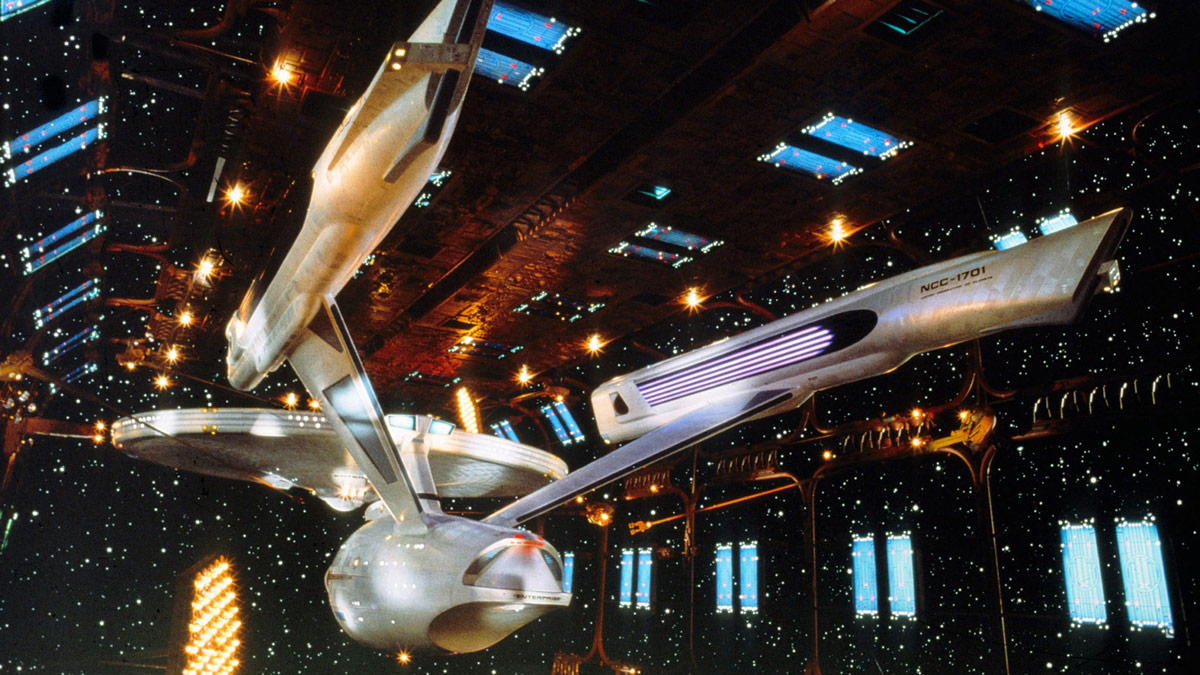
(c) Photofest / Getty Images
The struggles of the special effects staff who created the movie “Star Trek: The Motion Picture” and what they left behind Part 1
RA&A founder Con Pederson
Pederson was in charge of all special effects shots on 2001: A Space Odyssey , but because he hated to stand out,(*13) it ended up that the name of Trumbull, the complete opposite,(*14) was the only one that became known.
While studying at the UCLA Film and Television Department, Pederson was hired by Disney because of his talent. His first job was as an animator for the space documentary " Moonshot " (1955) for the TV series "Disneyland." The show depicted a lunar exploration project with live-action special effects and was supervised by rocket scientist Wernher von Braun (*15).
"Man and the Moon"
In 1959, Pederson joined Graphic Films, a production company founded by former Disney employee Lester Novros that used precision animation and miniature special effects to make promotional films for the military, NASA, and airlines.
With this company, Pederson directed To the Moon and Beyond, a Cinerama360 dome film shown at the Transportation and Travel Pavilion at the New York World's Fair (1964-1965), with newcomer Trumbull serving as illustrator.
The final part of the film takes a fantastical turn, and experimental filmmaker John Whitney helped with this scene. In 1958, he built a motion-controlled camera by combining an animation stand and an analog computer. He used this device to create title sequences for Hitchcock films, and Abel was his assistant. Whitney also used a motion-controlled camera in "To the Moon...", and it was during this time that Pederson became friends with Abel.
*13 In 1995, I visited Metro-Lite Studios in Los Angeles. To my surprise, Pederson was there, still working as a CG animator on Runaway Express (1995). I asked him a question I had been wondering for a long time: "It wasn't Trumbull who was in charge of the special effects for 2001: A Space Odyssey, but you, right?" Pederson simply said, "Could you tell that story in front of my wife..." and smiled faintly.
*14 Trumbull contributed an article under his own name to the industry magazine American Cinematographer (June, 68) titled "Creating Special Effects for 2001: A Space Odyssey," giving people the impression that he was the central figure in the film's special effects. This selfish, unilateral action angered Kubrick, and their relationship deteriorated. His anger exploded in 1984, when Kubrick took out a full-page ad in the industry daily The Hollywood Reporter stating that "Trumbull was not responsible for the special effects on 2001: A Space Odyssey."
*15 Pederson was drafted into the Army in 1956, and coincidentally was assigned to Redstone Arsenal, which conducted rocket research. He joined von Braun's group, and worked on illustrations for lunar and Mars missions under the direct supervision of real rocket engineers. His colleagues at the time included Harry Lang, who would later become the production designer for 2001: A Space Odyssey, and Frederick I. Ordway III, who served as a scientific consultant.
After leaving the military, he returned to UCLA to get his master's degree, and worked at night for Disney writing the screenplay for the space documentary Mars and Beyond (57), which also includes a plot under von Braun's direction to explore Mars using a parasol ion rocket, as well as highly imaginative images of life on Mars.
*16 Recently, videos claiming to be from " To the Moon... " have been uploaded to YouTube and other sites, but this is actually the educational film " Universe " (1960) produced by the NFB (National Film Board of Canada). The actual "To the Moon..." was an extremely unique film, using a 70mm 10P 18fps film projected onto a dome screen using a fisheye lens. For that reason, according to Graphic Films, neither the negatives nor prints remain, and only a few sketches and making-of photos remain.
If we reconstruct the story based on existing materials, it goes like this: "At the beginning, a huge spaceship leaves the moon and heads into outer space. The audience experiences these phenomena through accelerated animations of various celestial bodies' behavior, such as swirling galaxies, supernova explosions, and the process of new stars being born from the gas in dark nebulae. The film returns to Earth, taking the audience through the Rocky Mountains, vast forests, the bottom of the ocean, and ant burrows. The perspective then becomes even more microscopic, as we explore the inside of cells, the structure of DNA, molecules, atoms, and even the world of atomic nuclei..." The 18-minute footage is narrated by Rod Serling, who is well known for his role in the TV series "The Twilight Zone" (1959-1964). It is also strongly reminiscent of the masterpiece " The Powers of Ten " (1968/1977) by Charles and Ray Eames. Please refer to this article for information on how this footage influenced "2001: A Space Odyssey."

